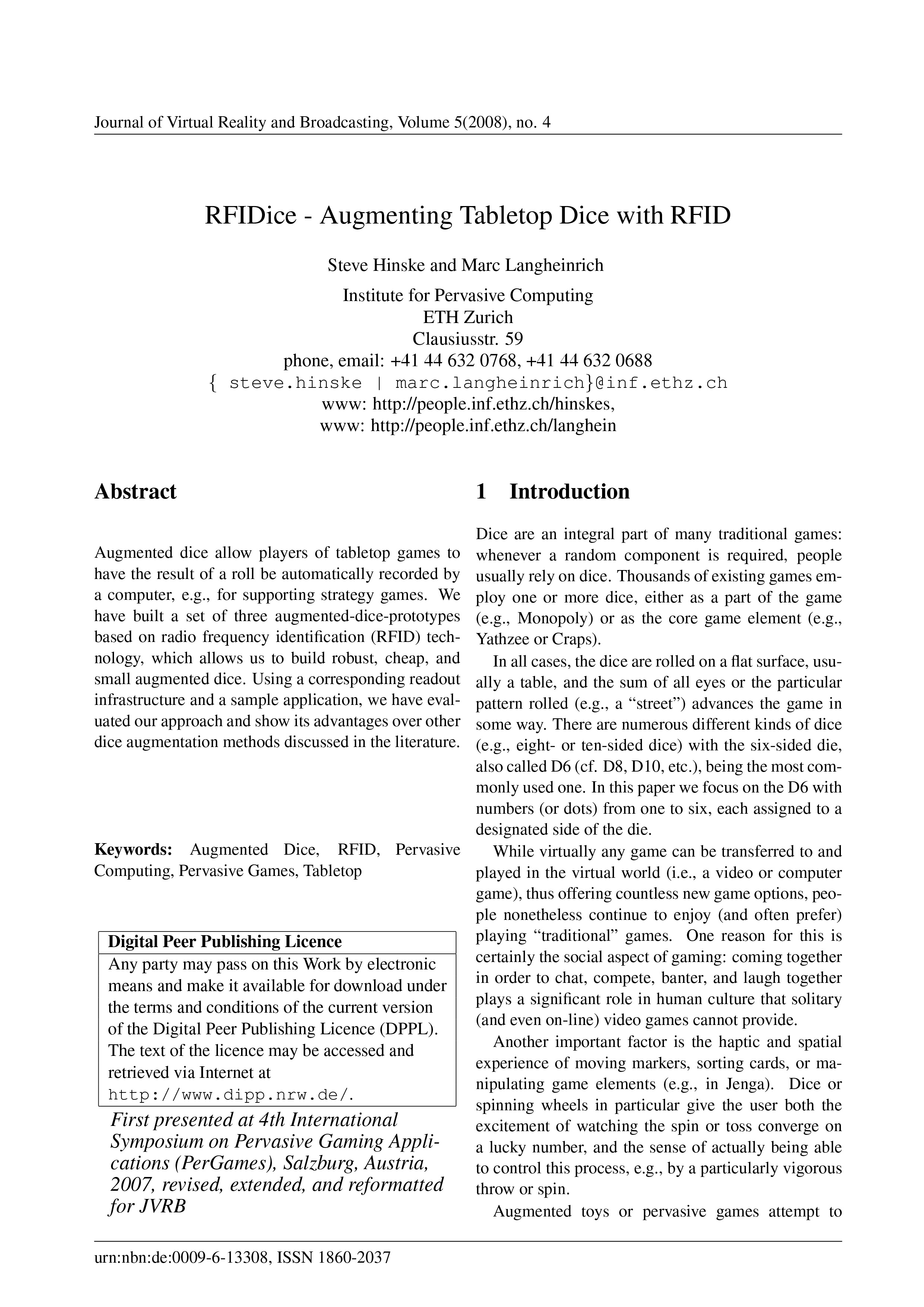RFIDice - Augmenting Tabletop Dice with RFID
DOI:
https://doi.org/10.20385/1860-2037/5.2008.4Keywords:
Augmented Dice, Pervasive Computing, Pervasive Games, RFID, TabletopAbstract
Augmented dice allow players of tabletop games to have the result of a roll be automatically recorded by a computer, e.g., for supporting strategy games. We have built a set of three augmented-dice-prototypes based on radio frequency identification (RFID) technology, which allows us to build robust, cheap, and small augmented dice. Using a corresponding readout infrastructure and a sample application, we have evaluated our approach and show its advantages over other dice augmentation methods discussed in the literature.
Published
2008-04-02
Issue
Section
PerGames 2007





